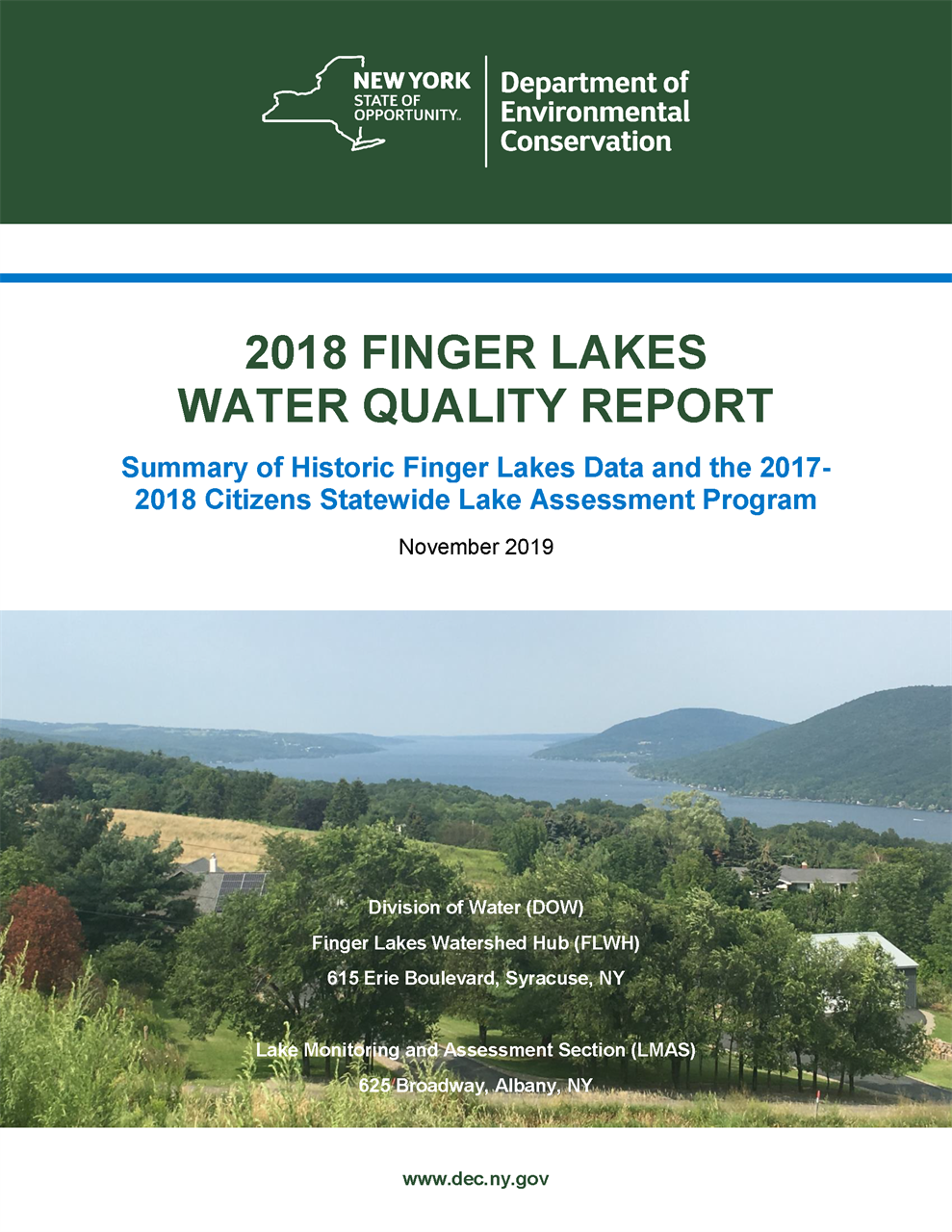CSLAP is a lake water quality monitoring program administered by the New York State Federation of Lakes Association (NYSFOLA) and the NYS Department of Environmental Conservation (DEC). Sampling begins in June and is done every two weeks, for eight total sessions through September. Observations are made of weather and lake conditions, water clarity is measured, and samples are taken near surface and at a prescribed depth of 18 meters for lab testing. Water temperatures are recorded and the samples are processed for shipment to the lab. Forms of phosphorous and nitrogen are measured, along with pH, conductance, and chlorophyll (an algae indicator). Four mid-lake sites, spaced from north to south on Seneca Lake, are sampled by Seneca Pure Waters volunteers. Data is analyzed by DEC scientists and a lake report is generally available the following spring.
The DEC’s 2018 Finger Lakes Water Quality Report provided this summary for Seneca Lake:
Seneca Lake is one of the largest Finger Lakes with a surface area of 175.4 km2 and volume of 15,500 million m3. In 2018, major trophic state indicators were intermediate for total phosphorus (0.011 mg/L), chlorophyll-a (5.4 µg/L), and water clarity (Secchi disk depth of 3.7 m). Seneca Lake has low levels of total nitrogen and NOX (0.551 and 0.241 mg/L, respectively). Using current chlorophyll-a as metric of lake quality, Seneca’s water quality has improved since the 1970s, but degraded since the late 1990s and early 2000s. The 2017-2018 data suggests that Seneca Lake is mesotrophic (moderately productive).

2018 DEC Report for CSLAP Article.pdf
What does this mean?
- The water volume of our lake is huge, larger than all other Finger Lakes combined, and has a retention time of nearly 20 years. It takes a long time to see changes in our watershed translate to changes in our lake water quality.
- There are three trophic states. Oligotrophic is very clean and clear, think an Adirondack lake. Mesotrophic is moderately productive, with weeds and algae that provide medium water clarity, like Seneca or Cayuga Lake. Eutrophic is a weed choked lake with poor clarity and low oxygen content, like some of the smaller lakes or ponds. Seneca Lake’s movement in the direction of more productivity is a large concern.
There are many factors affecting the trophic measures and our perceptions of water quality. The invasive zebra and quagga mussels have had a large impact on water clarity as a result of their filter feeding. Nutrients flowing into the lake from many sources create the conditions of increased productivity and are a target of the Nine Element Watershed Management Plan that is under construction. Completion of this plan will allow prioritization of remediation efforts and facilitate funding required.
A broad review of conditions in the DEC report lists other factors of concerns.
Like other NYS lakes, the Finger Lakes continue to face water quality challenges from climate change, agricultural run-off, emerging contaminants, stormwater flows, aging infrastructure, septic impacts, and the effects of cyanobacterial blooms (often called Harmful Algal Blooms, or “HABs”).
A full copy of the 2018 DEC report can be found at the Pure Waters website . Once the 2019 DEC report is released, we will update this topic and make that report available.
.png)